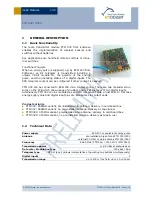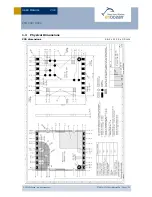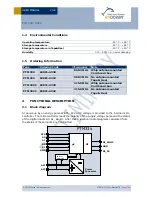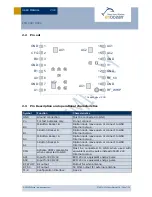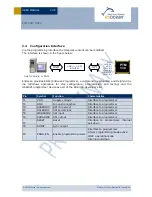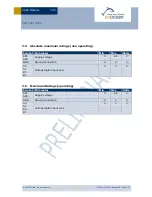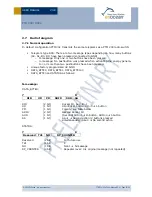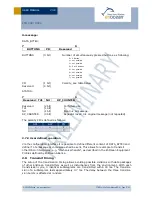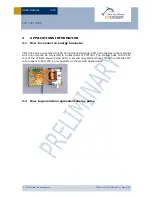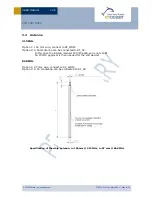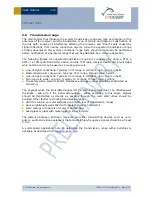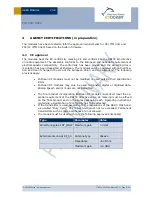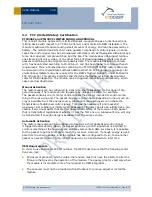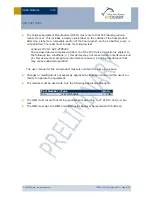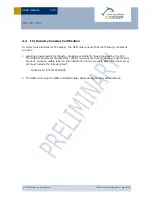
USER MANUAL V0.8
© 2009 EnOcean | www.enocean.com
PTM 33x / 33xC User Manual V0.8 | Page 18/20
PTM 33X / 33XC
4.2
FCC (United States) Certification
PTM330C and PTM332C LIMITED MODULAR APPROVAL
This is an RF module approved for Limited Modular use operating as an intentional trans-
mitting device with respect to 47 CFR 15.231(a-c) and is limited to OEM installation. The
module is optimized to operate using small amounts of energy, and may be powered by a
battery. The module transmits short radio packets comprised of control signals, (in some
cases the control signal may be accompanied with data) such as those used with alarm sys-
tems, door openers, remote switches, and the like. The module does not support continu-
ous streaming of voice, video, or any other forms of streaming data; it sends only short
packets containing control signals and possibly data. The module is designed to comply
with, has been tested according to 15.231(a-c), and has been found to comply with each
requirement. Thus, a finished device containing the PTM330C/PTM332C radio module can
be operated in the United States without additional Part 15 FCC approval (approval(s) for
unintentional radiators may be required for the OEM’s finished product), under EnOcean’s
FCC ID number. This greatly simplifies and shortens the design cycle and development
costs for OEM integrators. The module can be triggered manually or automatically, which
cases are described below.
Manual Activation
The radio module can be configured to transmit a short packetized control signal if trig-
gered manually. The module can be triggered, by pressing a switch, for example.
The packet contains one (or more) control signals that is(are) intended to control some-
thing at the receiving end. The packet may also contain data. Depending on how much en-
ergy is available from the energy source, subsequent manual triggers can initiate the
transmission of additional control signals. This may be necessary if prior packet(s)
was(were) lost to fading or interference. Subsequent triggers can also be initiated as a pre-
caution if any doubt exists that the first packet didn’t arrive at the receiver. Each packet
that is transmitted, regardless of whether it was the first one or a subsequent one, will only
be transmitted if enough energy is available from the energy source.
Automatic Activation
The radio module also can be configured to transmit a short packetized control signal
if triggered automatically. Again, the packet contains a control signal that is intended to
control something at the receiving end and may also contain data. As above, it is possible
for the packet to get lost and never reach the receiver. However, if enough energy is avail-
able from the energy source, and the module has been configured to do so, then another
packet or packets containing the control signal may be transmitted at a later time.
OEM Requirements
In order to use EnOcean’s FCC ID number, the OEM must ensure that the following condi-
tions are met:
End users of products, which contain the module, must not have the ability to alter the
firmware that governs the operation of the module. The agency grant is valid only when
the module is incorporated into a final product by OEM integrators.
The end-user must not be provided with instructions to remove, adjust or install the
module.

